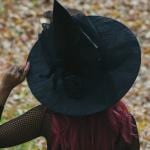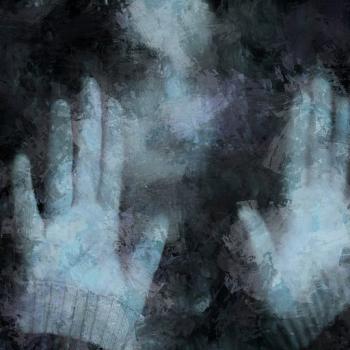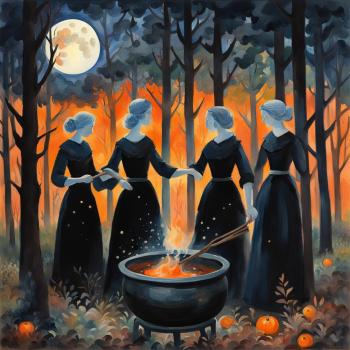I didn’t know Scott Cunningham was gay when I first discovered him twenty-five years ago. I was right around twelve, browsing the humble New Age section of a bookstore in central Phoenix, deeply hiding in both the broom- and queer/trans closets. His was the first book on witchcraft (or Wicca) that I ever bought, and it was with trepidation and excitement that I brought it to the checkout counter. I hid it on the way home, and when my mother asked what I’d bought, my answer was decisively vague: “books.”
Over the next few years, my slowly growing library gradually became filled with Cunningham’s works; I devoured them, reveling in the profound sense of both peace and welcome they offered. Even at that time, in the late 90’s, the popular cultural references in the books were outdated, but the material has, in many ways, remained evergreen – if not for myself, then for many who come to Wicca and witchcraft.

It took me more than two decades to learn not only that Cunningham was queer, but the depth and complexity of his life as a gay man in a country and climate that was still deeply violent towards queer and trans people. And while I’d like to believe that the witch, Wiccan, and Pagan communities that exist in the United States and globally today would be far more welcoming for Cunningham than he may have encountered decades ago, as I engage with my cisgender and heterosexual peers in different spaces and contexts… I’m not entirely sure I do believe that. Hatred of queer and transgender people is still alive, and yes – it’s absolutely alive in our communities.
As I write this, Pride month is drawing to a close. For most of my queer and trans friends and family, this year’s pride has understandably felt more like wrath month (and after all, that first Pride was a riot, one led by Black and Latinx trans women). In the United States, efforts continue to roll back rights for LGBTQ people, in spite of a Supreme Court ruling protecting some limited rights for some LGBTQ people; for many, this assault on queer rights is combined with a battle for racial justice and against systemic racism and police brutality. It feels like both a powerful and a fraught time to be a queer or a trans person, much less a queer or trans witch or pagan – and my whiteness and middle-classness insulate me from the most virulent homophobia and transphobia, all too often targeted at Black and Latinx trans women.
It’s out of this particular cultural and political moment that I’ve been simmering on a desire to put together a small reading list, both for my fellow queer and trans witches, and – perhaps especially – for my cisgender and/or straight witch peers. The time for tolerance – or even acceptance – of queer and trans witches has long passed. Now, we’re asking you not to just accept us – but to do the work of supporting and celebrating us, and actively unlearning cissexism, heterosexism, and the myriad intersectional oppressions that impact queer and trans people (racism, colonialism, ableism, sizeism, and xenophobia, among others).
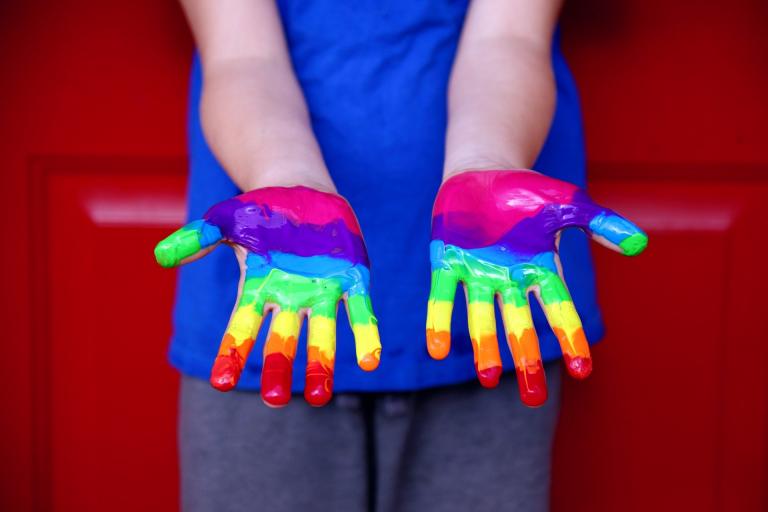
Part of that begins with holding our publishers accountable for an astonishing lack of diversity among their authors, and demanding greater efforts against white supremacy. A necessary part of that obviously includes publishing books by and about queer/trans witches of color. While there are stunning works of brilliance by queer authors of color in the works I’ve mentioned below, they are by and large un- or underrepresented in witch and pagan publishing. That needs to change.
I note in each of my recommendations below when and where the books contain work by authors of color; these works are painfully few, but they’re beautiful starting places, and I hope to see their authors publishing their own books soon, to see them keynoting pagan and witch conferences (both virtual and physical, once it’s safe again!).
There are a lot of things I hope for when I think about the future of anti-racist, queer and trans witches and witchcraft, and the books below offer useful frameworks and tools for getting started. But they’re just that – a beginning. My dream is that, when Pride rolls around next year, we’ll have read more, learned more, and have a whole lot more to add to this list; Llewellyn’s recently-released statement gives me hope that they are committed to doing the work of recruiting more diverse authors, but it’s up to all of us – not just publishers – to support Black, Indigenous, and other writers of color in gaining access to the platforms that already exist and getting their brilliance out into the world. I have faith that can and will happen, but I also know it’s on all of us to make change (we’re witches, after all – that’s what we do!).
On to the books!
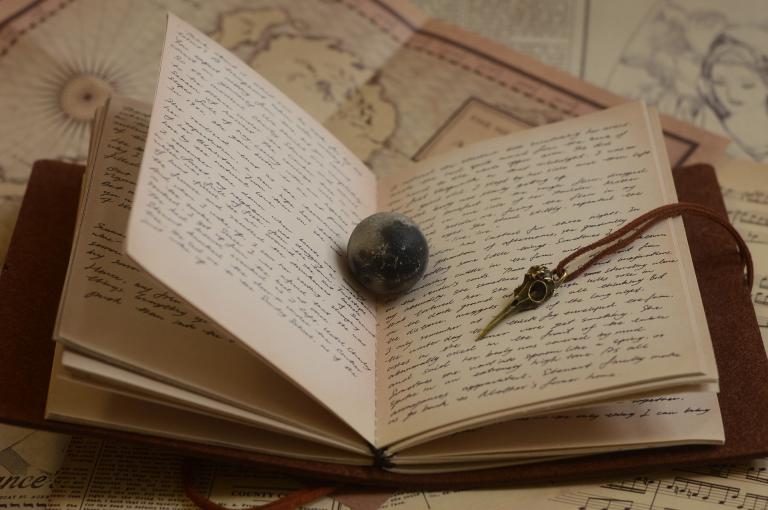
Whispers of the Moon: The Life and Work of Scott Cunningham, Philosopher, Magician and Modern-day Pagan
By David Harrington and deTraci Regula. Llewellyn Books, 1996
Harrington and Regula’s Whispers of the Moon is out of print now, but with a bit of work you can still find copies on auction sites and independent bookstores. While this work won’t provide a guidebook for how to enact a radical queer witchcraft, it does offer insights into the world and life of one of modern witchcraft and Wicca’s most beloved and prolific authors. The authors have meticulously collected previously unpublished correspondence, spells, affirmations and other documents that shed light on Cunningham’s process and beliefs; readers can observe Cunningham’s early outline for Earth Power or check out his list of “The Best Thirteen Books on the Craft” – a list that included 19 works when it was compiled in 1979.
The book is, notably, a product of both its times and the politics of its subject and authors – Harrington and Regula mention that they want to keep private those aspects of Cunningham’s life that he wished to be guarded, and either as a result of that or in spite of that, there’s little reference to Cunningham’s own queerness in the book. Although Whispers of the Moon won’t shed much light on what it meant to Cunningham to be a gay witch in the late eighties and nineties, it does reveal how one of Wicca’s foremost thinkers got his start, how he grew to prominence, and the myriad platonic relationships he built with witches, pagans, and Wiccans along the way.
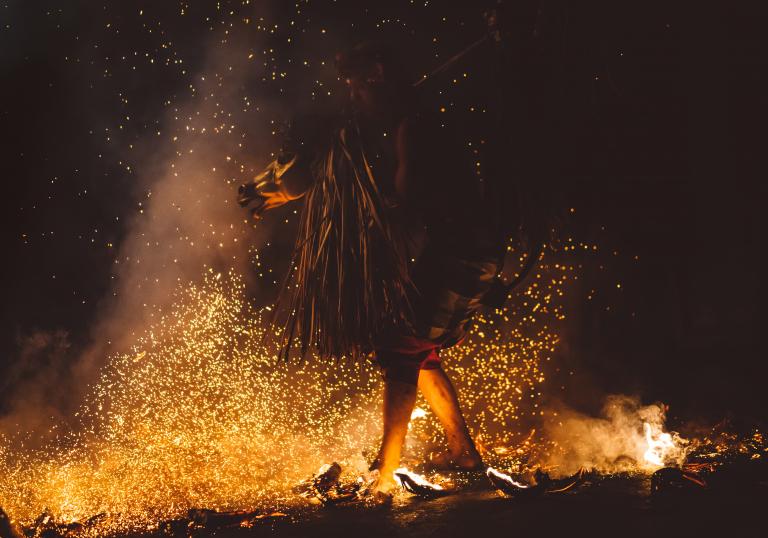
Arcane Perfection: An Anthology of Queer, Trans, and Intersex Witches
Edited by Pat Mosley, Dylan Ce, Redbud Collective & Friends. Published by Cutline Press, 2017
Arcane Perfection is a collection like no other I have encountered, and a couple of years after I stumbled upon it, it remains the first book I recommend when people want to explore what a queer/trans witchcraft might be. This 2017 anthology combines interviews and essays with invocations, visual art, ritual and unparalleled treatises on queer cosmologies.
It’s hard to pick a favorite (even a handful of favorite) works from this volume to share, but Mosley’s interviews with Empress provide some of the most on-point discussions of the intersections of racism, transphobia, and colonialism as they emerge within both feminist and witch spaces; she says, for example, that “white women dictating gender to Black and Native peoples is a politic which cannot be divorced from racism and twisted into an issue of sexism” and that “Paganism is sick with the poison of white supremacy.” This concept, articulated by Empress years ago, is still one that many contemporary pagans refuse to acknowledge – and thus, refuse to work on. Other favorites in this anthology include Mikoto’s beautiful “Prayer to the Gods” (“Dionysos Lysios, free us from the system which kills us. Let Him curse those who have hurt you” is a particularly poignant excerpt, but then so is pretty much everything else in this book).
My one complaint? This only appears to be available on Kindle, and I would be ecstatic to be able to buy a copy for myself, to buy copies and hand them out freely to coven members and community members and young queer and trans witches who are hungry for exactly this collection. I cannot recommend it enough.

Outside the Charmed Circle: Exploring Gender and Sexuality in Magical Practice
By Misha Magdalene. Llewellyn, 2020
If you’ve heard about one book on queer/trans witchcraft lately, it’s probably this one. Misha Magdalene’s 2020 work offers a refreshing introduction to witchcraft through a lens that not only explicitly celebrates queer and trans witches, but does so with an intersectional feminist analysis (they have a degree in gender, women, and sexuality studies, and that experience definitely shines in the book). In part, it results in a book that almost feels like a hybrid of modern witch guidebook and introduction to gender and sexuality studies – they seamlessly incorporate intersectional feminist and queer theory to establish basic terminology and summarize current and widely accepted theories about gender expression and identity, and then effortlessly move on to show how your favorite ancient gods were way, way more queer and trans than you (probably) expected.
While I couldn’t call Outside the Charmed Circle the singular panacea that can heal the long history of gender essentialism, heterosexism, and transphobia that have plagued modern witchcraft and paganism, I would say that this should be required reading for all witches, queer and straight, trans, non-binary and cis, who want to work to unlearn that history and do better.
Igniting Intimacy: Sex Magic Rituals for Radical Living and Loving
By Reverend Rowan Bombadil. Llewellyn, 2019
Sex magick has never really been my “thing,” but through my job we focused on this topic a few months ago, and my big queer + trans heart is so very glad we did, precisely because of this book. Rev. Rowan Bombadil’s Igniting Intimacy explores sex magick holistically, taking specific time to acknowledge issues of dysphoria, gender diversity, queer love and sex and consent. Their work is outstanding, and while I’ve only read a little on sex magick so far, this is hands-down the book I’d recommend, not just to LGBTQ+ folx who are starting to explore this topic, but to anyone who wants a truly inclusive, inspired guide to getting started.
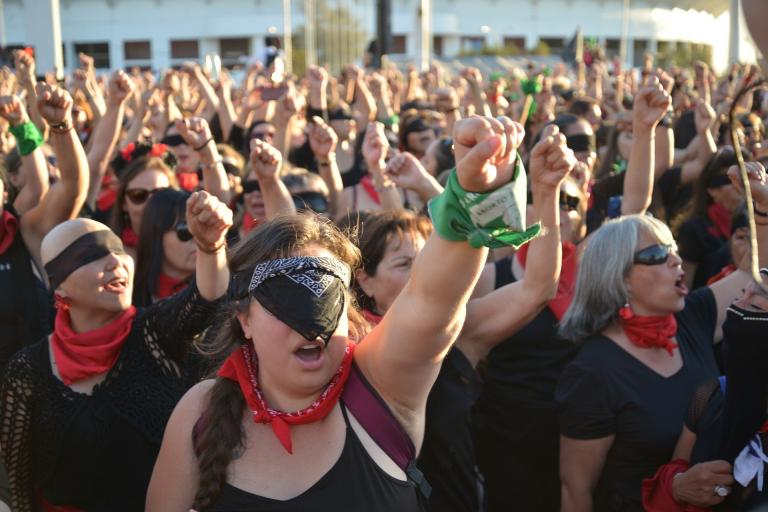
Becoming Dangerous: Witchy Femmes, Queer Conjurers, and Magical Rebels
Edited by Katie West and Jasmine Elliott. Weiser Books, 2019
Unlike most of the other books in this list, Becoming Dangerous isn’t exclusively by or about witches. The authors in this collection are from many races, sexual orientations, genders, and spiritual practices, yet all of them have contributed to this theme that centers ritual as resistance. For some, like Mey Rude in “My Witch’s Sabbath of Short Skirts, Long Kisses, and BDSM,” those rituals were a delicious synthesis of magick and sex, of affirmational chants-as-spells like “I love my thighs, hips, and eyes.”
In another chapter, J. A. Micheline explores the ritual of enacting a modality that is celebrated/enforced by white supremacy, highlighting the way that for white women, the fierceness and resistance of many white witches would only compound the monstrosity that white supremacist patriarchy already expects – and forces – upon her as a Black woman. Michelin notes that she and Black people “have neither the luxury, nor the privilege to become dangerous; we are too busy having to constantly prove to a white world that we are not” (257). Becoming Dangerous offers a cogent way of thinking about ritual and resistance that is especially valuable for the current cultural and political climate.
Queer Magic: Power Beyond Boundaries
Edited by Lee Harrington and Tai Fenix Kulystin. Mystic Productions Press, 2018
Harrington and Kulystin’s Queer Magic is a thick book, packed with over fifty unique works by LGBTQQIAP+ creators, explores what the editors call “snapshots of queer mysteries and revelations of dangerous truths,” and the book absolutely delivers all of that. In Steve Kenson’s chapter, “The Queer Journey of the Wheel,” the author offers a beautiful interpretation of the Wheel of the Year through an iteration of a possible queer life cycle (253-256).
Almah LaVon Rice dazzlingly explores experiences of divination in different snapshots of the author’s life in her chapter “Between Starshine and Clay: DIY Black Queer Divination.” On top of the writing (essays, poetry, prayer and ritual all intermingle, sometimes in the same chapter), Queer Magic departs from most of the other books mentioned here in its inclusion of sigils, comics, and other art that centers queer, trans, and anti-racist experiences, needs, and politics.
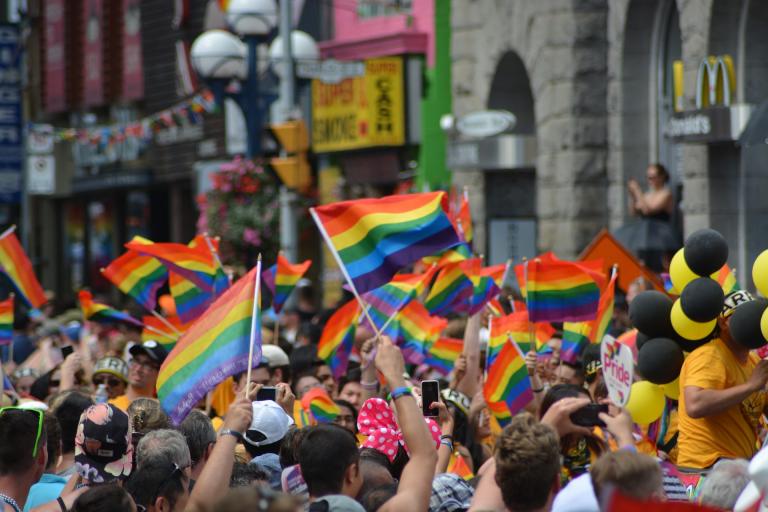
Queer Magic: LGBT+ Spirituality and Culture from Around the World
By Tomás Prower. Llewellyn, 2018
Prower’s 2018 volume is a compendium of queer, trans, and other deities and spirits who transgress what are often western, colonially-imposed concepts around divinity and gender. Clocking in at over 300 pages, this book discusses both queer/trans myth and the histories of different deities as well as contemporary cultural frameworks, mantras, testimonies and rituals from across different cultures and different cultural practitioners.
Prower is intentional in highlighting when and where predominantly white, western assumptions about gender and sexual orientation in different regions, countries, cultures and faiths are either flat-out wrong, or miss the way that a history of colonialism has impacted indigenous beliefs about (and often, celebrations of) those who embody something other than binary gender or heterosexuality. He says at one point that when he was young, he wanted “to go beyond my Irish-Mexican heritage and Catholic-school bubble” to learn more about LGBTQ+ identities and experiences across the world, and this work is absolutely a testament to that – it is incredibly well-researched, discusses queer/trans divinity, spirituality and culture from Judaism to Islam to Candomblé, and many, many other cultures and faiths.
Queer Magic may not be about witchcraft exclusively (or Wicca at all), but I think that’s perhaps part of why it is such an invaluable read for anyone working on magical practice, especially those thinking through their and others’ queerness and gender diversity. It’s a welcome respite from works that overwhelmingly focus on white, Western LGBTQ experiences (witchy or otherwise!), and a decentering of those identities that we need more of in future works.
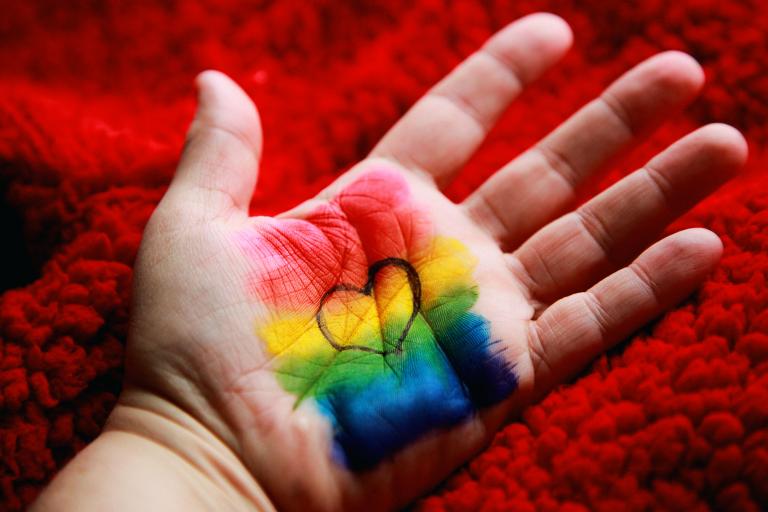
Queering Your Craft: Witchcraft from the Margins
By Cassandra Snow. Weiser Books, forthcoming November 2020
Weiser Books was kind enough to send me an early copy of Cassandra Snow’s forthcoming Queering Your Craft, expected out in 2020, and I couldn’t wrap up this list without giving it a mention here. The author opens the book by stating clearly, “this book is an introduction to witchcraft,” noting that she hopes it will specifically serve to support queers and other marginalized people exploring this path. This is important to note, here, because much of this book does feel pretty basic – she runs through standard descriptions of different types of magical practice, discusses sigils and meditation, the perils of group work vs. solo work, the elements – the whole shebang, but with a queer bent (pun always intended).
That queering, however, is what elevates this and makes it especially relevant for those wishing to finally see themselves as something other than a footnote in an introductory witchcraft volume. For example, Snow offers your standard discussion of the Sabbats, but adds at the end that “any day that is special and important to you can be held as special and holy, potentially even reaching Sabbat status” – such as the day someone starts hormones or announces their name.
Where Queering Your Craft really shines is in the back half of the book, which offers a sort of grimoire with spells and rituals the likes of which I’ve rarely seen elsewhere and which were beautifully written, such as “A Spell for Chosen Family Members” or “A Spell to Strengthen Community Bond and Collective Love and Power.” The version I received didn’t yet have it included, but I’m eager to read Mat Auryn’s foreword when the printed version comes out as well – his writing elsewhere (including in other works here!) has been phenomenal and his part is sure to be a fantastic inclusion to Snow’s otherwise strong text.




